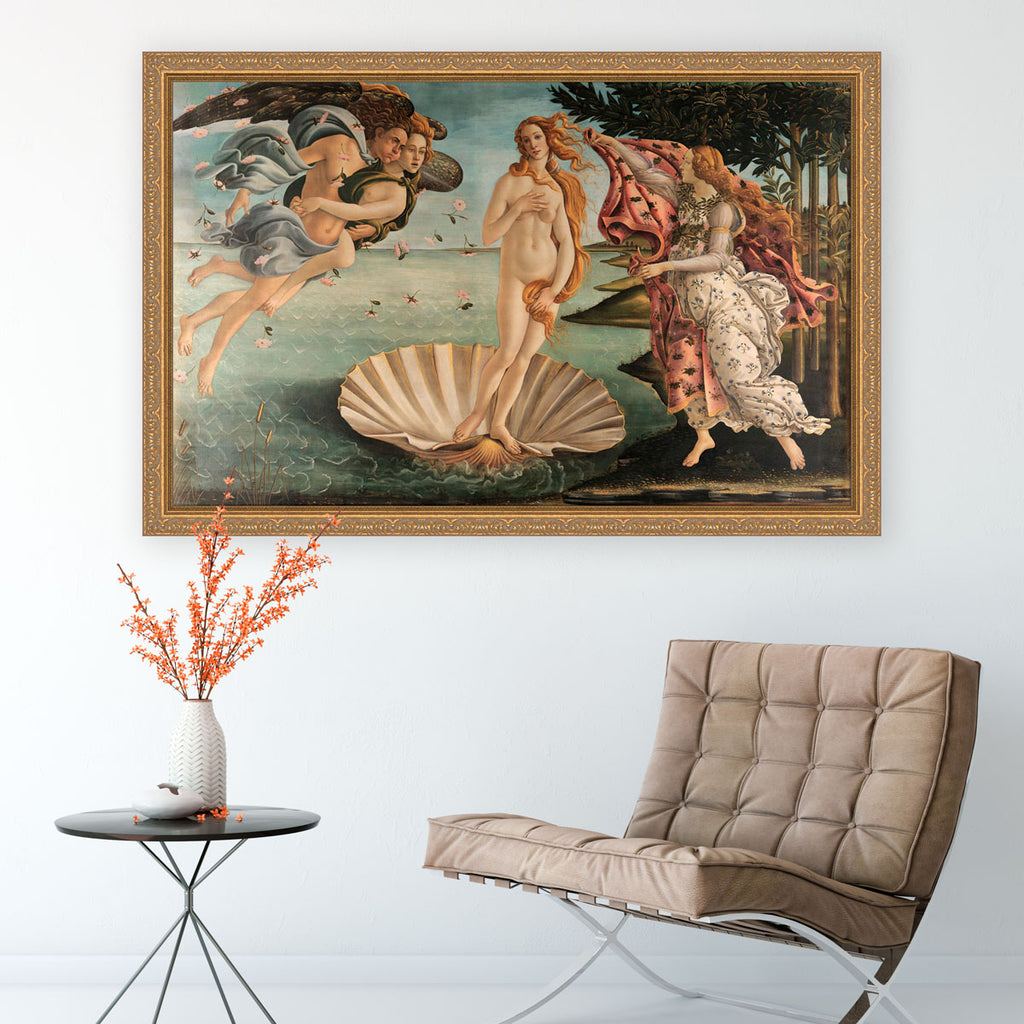The Birth of Venus, painted by Sandro Botticelli between 1482 and 1485, is one of the world’s most famous and revered works of art. Venus, the Roman goddess of love, beauty and desire, is shown nude standing on a large shell on the seashore. On one side of the work, Zephyr, god of west wind, blows a shower of roses toward her on winds that gently carry her to shore. On the other side one of the Horae (goddesses of the seasons) awaits the Venus’ arrival where she is ready to clothe her with a flowing cape.
This work was groundbreaking for the time in which nudity was rarely used in art, with Christian inspiration dominating the art of the Middle Ages. The emergence of humanism led to a renewed interest in the myths of ancient Rome, which led to the resurgence of classical nudes depicted in art. This work also broke the mold in that it was painted on canvas during the early Renaissance when wood panels were the preferred choice of substrate for paintings. The original painting measures roughly 6 x 9 feet, and has been called the first large-scale canvas created in Renaissance Florence. Over the centuries, the varnish used to preserve the painting began to turn opaque, obscuring some of the original details and colors. After a careful restoration in 1987, the painting was restored to its original grandeur as shown in our faithful reproduction available here. Also available is “La Primavera”, a work often referred to as the companion to "The Birth of Venus” although it was completed 4 years earlier. Shop Botticelli prints.


